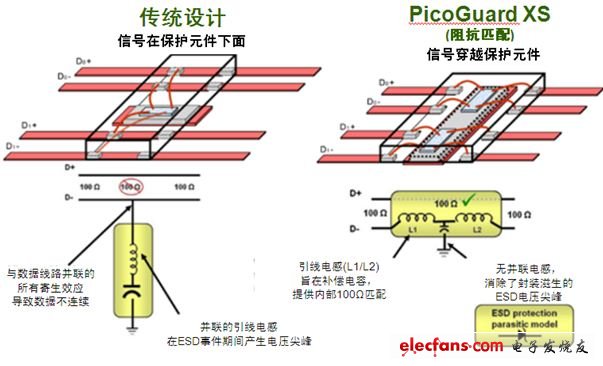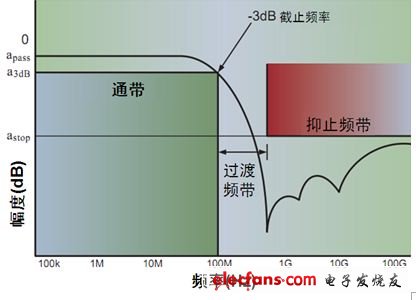Electrostatic discharge (ESD) protection and electromagnetic interference (EMI) are becoming increasingly important considerations for all electrical equipment. Consumers require portable / wireless devices such as smartphones to have more functional features and adopt thin industrial designs. This requires designers to pay more attention to ESD and EMI performance in small form factor packages. This article will analyze circuit protection requirements, compare different circuit protection technologies and filter technologies, introduce ON Semiconductor products used in typical circuit protection and filter applications, and help design engineers design more reliable portable and consumer products. Critical chipset external ESD protection requirements The industry is using the most advanced technology to manufacture advanced system-on-chip (SoC). In order to optimize the function and chip size, designers are continuously reducing the minimum feature size of their chip designs. But the corresponding price is: as the feature size decreases, the device is more susceptible to ESD damage. The design window left by today's integrated circuits (ICs) for protection functions has been reduced. ESD protection must work in a safe overvoltage and overcurrent area. As the industry tends to manufacture more advanced ICs with smaller geometries and lower voltages, the safe operating area of ​​ICs is also shrinking. The key to effective ESD protection is to limit the voltage during an ESD event and keep it within the safe voltage window of a given chipset. ESD protection products achieve effective ESD protection by providing a low-impedance current path to ground during ESD events; protection products for new integrated circuits require lower dynamic impedance (Rdyn) to avoid voltages that can cause damage. As the design window left for the protection function is reduced, it becomes more important to choose ESD protection products with low dynamic impedance to ensure that the clamping voltage does not exceed the safety protection window of the new chipset. Therefore, ESD protection product suppliers must provide information to protect the effectiveness of products, not just to protect the survival level of the product itself. Comparison of silicon ESD protection technology and passive ESD protection technology ON Semiconductor's protection and filtering solutions are based on advanced silicon technology. In comparison, several other low-cost passive solutions use a combination of ceramic, ferrite and multi-layer varistor (MLV) materials. These types of devices traditionally have weak ESD clamping performance. In some passive schemes, downstream devices will experience voltages one or more orders of magnitude higher than ON Semiconductor ’s silicon solutions, as shown in the ESD screenshot below, which compares ON Semiconductor ’s silicon solutions with competing technologies. Performance under 8 kV ESD stress conditions. The turn-on voltage of the competitive technology is so high that it will not activate at all, and the measured voltage is nothing more than a voltage drop across the 50 Ω measurement circuit. Other older technologies will degrade performance even after experiencing fewer ESD impacts. Due to the material composition, some passive devices often have inconsistent performance under different temperature conditions, so reliability in harsh environments is lower. Figure 1: Comparison of ESD clamping performance measured by ON Semiconductor silicon devices and passive competitor devices at 50 Ω system at 8 kV PicoGuard XS ESD protection technology to eliminate signal integrity issues Traditional ESD protection products are mounted between signal traces and ground without interruption in the signal path. In order to minimize the signal integrity degradation of high-speed data lines, capacitance must be minimized, as shown in Figure 2. Figure 2: Comparison of traditional ESD protection design methods with PicoGuard XS. ON Semiconductor ’s excellent PicoGuard XS technology provides impedance-matched signal paths by traversing signal paths through protection products, thus eliminating signal integrity issues. PicoGuard XS technology balances the package series inductance and protection diode capacitance to provide an excellent 100 Ω signal path that matches the impedance of the traces on the PCB. In addition, this design actually saves the inductance in series with the protection diode, thus minimizing voltage spikes caused by packaging at the beginning of the ESD event. Electromagnetic interference (EMI) filtering: single-ended filter and common mode filter (CMF) ON Semiconductor provides two types of EMI filters, namely single-ended filters and common-mode filters. Single-ended filters are manufactured in different array configurations for parallel interface. These filters include general-purpose resistance-capacitance (RC) filters for low-speed signals such as audio and inductance-capacitance (LC) filters for higher-speed and power-sensitive interfaces. The low-pass filter provides a cut-off frequency from 700 MHz up to 6 GHz. The cut-off frequency is shown in S21 shown in FIG. 8. Single-ended filters cannot meet the needs of high-speed differential interfaces. Differential interfaces have inherent noise suppression, but they are not completely immune to common mode noise that may be present from external sources, nor can they prevent interface signals from radiating to other system components. Figure 3: Single-ended low-pass filter characteristics
GFCI, or Residual Current Device (RCD) is a device that shuts off an electric power circuit when it detects that current is flowing along an unintended path, such as through water or a person.
It is used to reduce the risk of electric shock, which can cause the heart to stop or cause burns. They can also prevent some fires, like when a live wire touches a metal conduit.
Waterproof Cover UL,Wholesale Waterproof Cover UL,Color Waterproof Cover UL,Cheap Waterproof Cover UL Hoojet Electric Appliance Co.,Ltd , https://www.hoojetgfci.com

